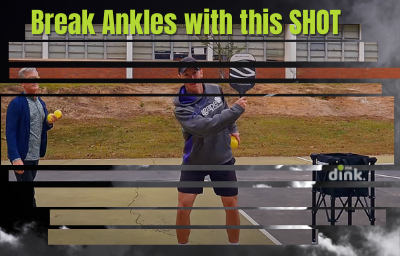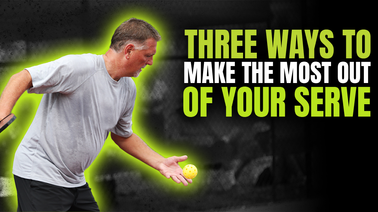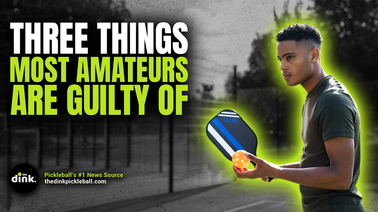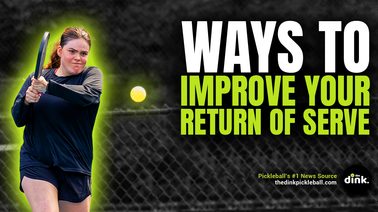
Recently, I was drilling with professional pickleball referee and instructor Matthew Cross. During our warmup, he pulled out this very deceptive shot that took me by surprise. I had been playing the sport at a high level and watching professional play religiously for well over a year, yet I had never seen this shot. Matthew told me that he calls the shot ‘The Kyle’, because he once saw pickleball professional Kyle Yates use it during a tournament that Matthew was refereeing. I captured the moment and a brief tutorial in the video below.
After sharing this video on a few platforms, I received comments stating that this shot was not created by Kyle Yates. One Facebook comment claimed that it was first done by ‘The Unicorn’, Shellton Jean Baptiste. I reached out to Shellton inquiring about the origins of the shot and he said, “That’s how I used to play. I come from a volleyball background, so no racquet sport at all. That was my backhand… I’m still using it and doing it.”
I also sent the video to Kyle Yates who said, “The version Matthew showed you I first saw from Steve Dawson at a camp a couple of years ago… Christine Barksdale has been playing that same style for 10 years, Brian Ashworth has been doing this shot for a decade.”
While the true origins of the shot are unclear, what is clear is that top pros have found it useful in their journey and you will too!
The key to this shot’s effectiveness is making the fake dink look as realistic as possible. You want to bend your legs and get your paddle behind the ball early as if you were going to hit a backhand dink cross court. Right as the ball apexes or starts to fall, you perform the dink action, purposefully miss the ball, and then roll your hand over to hit a speedup with your forehand. As with any speed-up in pickleball, your goal is to cause a pop-up that you can then put away. Your goal should not be to hit an outright winner with the speed-up. As your level progresses, there’s a very good chance that your opponents will get a paddle on the ball and pop it into the air. You always must be ready to clean it up on the next shot or reset the ball if they counterattack you.

When you speed the ball up, it’s important that it has just enough pace to land in the back of the court if the opponent doesn’t hit it. Ideally, you should be aiming just below the shoulder of your opponent, as that is a very awkward place to get attacked. I’ve frequently heard the saying, ‘Shoulder high, let it fly’, meaning that if a ball is going at your shoulder with some pace, it is most likely going to land out.
WRITTEN BY DINK CONTRIBUTOR SHEA UNDERWOOD
Shea Underwood
Love Pickleball? Join 100k+ readers for free weekly tips, news & gear deals.
Subscribe to The DinkGet 15% off pickleball gear at Midwest Racquet Sports









